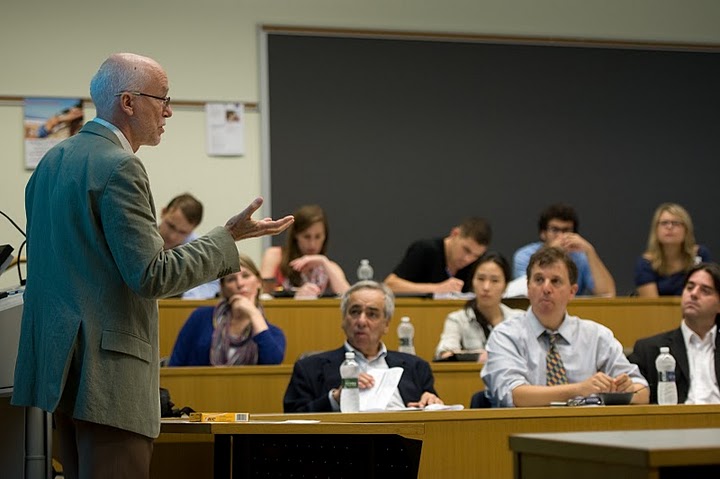
In a PPR Seminar, Geoffrey Heal discusses of the importance of analyzing uncertainty over climate change.
Existing economic analysis of climate change policy might not be accurate because it assumes too much certainty about the empirical effects of global warming.
That’s the basic conclusion that follows from a paper presented last week by Professor Geoffrey M. Heal of Columbia Business School at the Penn Program on Regulation’s opening risk regulation seminar of the 2011-12 academic year.
Heal and his co-authors, Antony Millner of University of California–Berkeley and Simon Dietz of the London School of Economics, agree that fundamental physical principles of the climate system are “unimpeachable;” however, they observe that the complex models developed by climate experts still disagree with one another on the precise effects of changing concentrations of greenhouse gases.
This disagreement reflects remaining uncertainty about the effects of climate change, which in turn renders traditional economic evaluations inadequate. Traditionally, economists have relied on expected utility theory when analyzing climate change policy. But expected utility theory, which calls for multiplying outcomes by their probabilities, depends on knowing the probabilities in the first place.
When so much remains still uncertain about the climate system, its changes and effects, policymakers cannot use the usual economic models that rely on expected utility.
Professor Heal and his coauthors offer an alternative model for analyzing climate change, one that takes uncertainty – or what they refer to as ambiguity – directly into account. They build a model of decision making that factors in people’s aversion to ambiguity, finding that taking such aversion into account can significantly affect the value of climate change policy.
They conclude that “ambiguity aversion is plausibly a major driver of the economic case for abating greenhouse gas emissions.”



